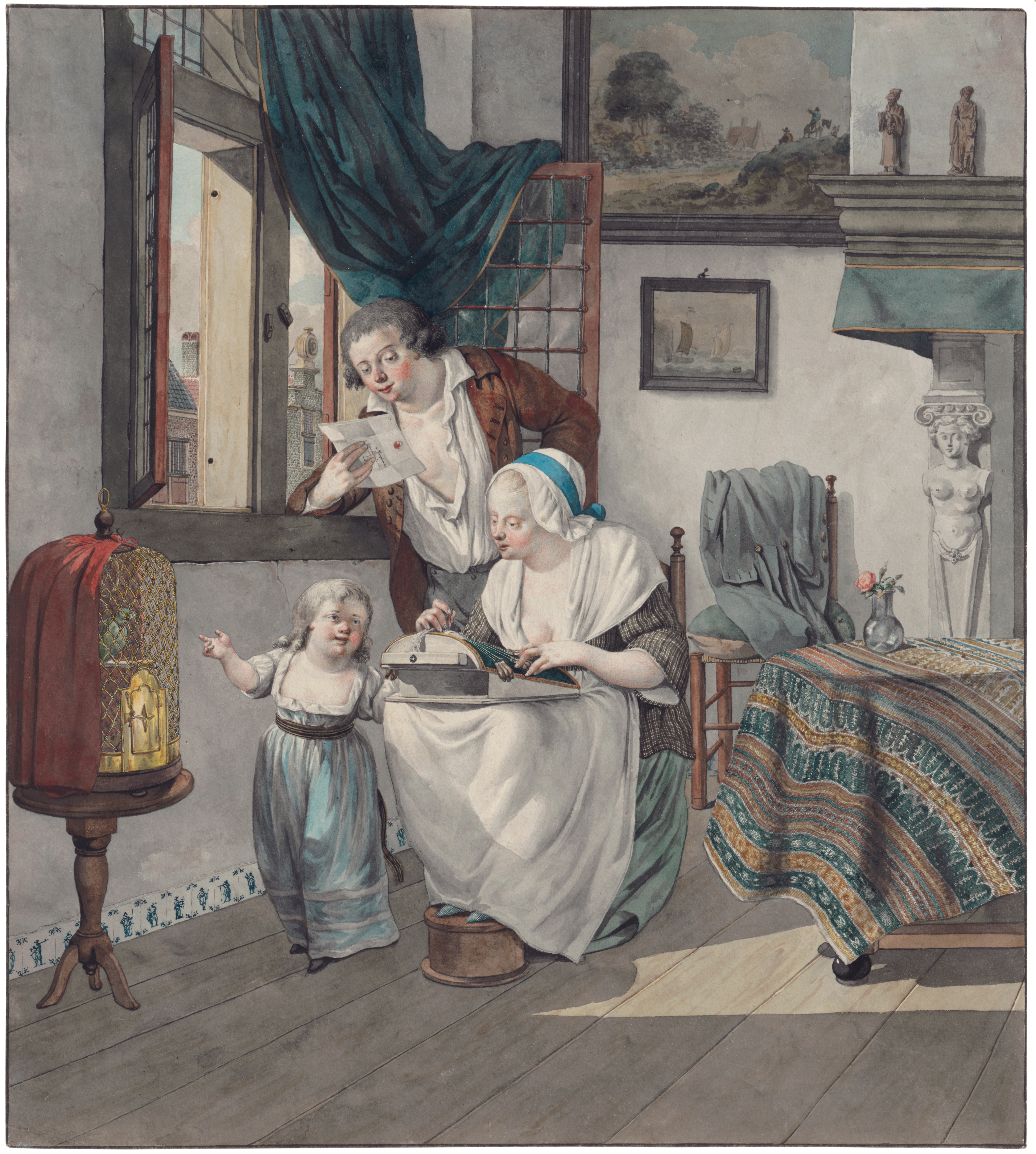Loading the page ...
Johannes Huibert Prins
(1757 The Hague – 1806 Utrecht)
Two Interior Scenes. Pen and greyish-black ink and watercolour. Each 34.5 x 31 cm. “H Prins inventor fec. 1796.” signed and dated on the verso.
These two highly finished watercolours, which are designed as companion pieces, are remarkable for the ingenious and amazing wealth of detail they contain as well as for their sensitive colourism. Prins provides an extremely vivid and realistic picture of the everyday life of a late 18th century, middle-class Dutch family. Not the slightest detail escapes his loving attention. In the first depiction, a young mother suckles her baby as she talks to her maid, while her little son eats porridge from a tin bowl. The door, which stands ajar, provides a glimpse of a homely interior with a lectern, paintings on the wall and a wall cupboard, on which several Chinese vases are stood. In the companion piece a young woman is busy with her needlework. Her casually dressed husband is absorbed in a letter he is reading at the open window, while the little daughter of the family points to a parrot in a brass cage. The interior reveals a comfortable prosperity. A sumptuous tablecloth forms deep folds, two landscape paintings adorn the rear wall of the living room and Chinese terracotta figurines stand on the ledge of the marble fireplace.
Prins’ linework is crystal clear, precise and of the utmost delicacy. The eye barely comes to rest and cannot get its fill of the countless details: the meticulously rendered brickwork of the facades opposite, the fine hairline cracks in the plaster of the living room, the precisely executed Delft tiles where the wall meets the floor, the varying textures of fabrics and objects, to give just a few examples. The harmonious, restrained colouring and the mild light play their part in evoking a serene harmony and an inviting, contemplative atmosphere. These are indisputably masterpieces of drawing by Johannes Huibert Prins, a thoroughly engaging, self-taught artist who was awarded a doctorate in philosophy from the venerable University of Leiden in 1781 and held the position as secretary of the Hague artists’ cooperative Pictura from 1785. He also achieved considerable renown during his lifetime as a painter of detailed urban vedute.
Contact us for further information